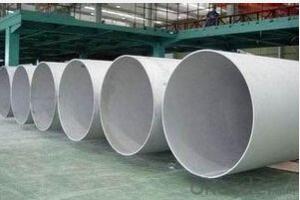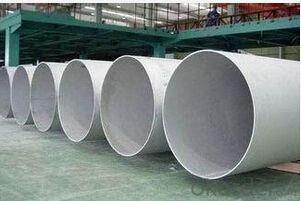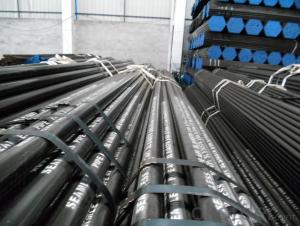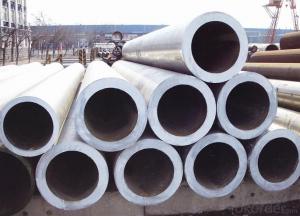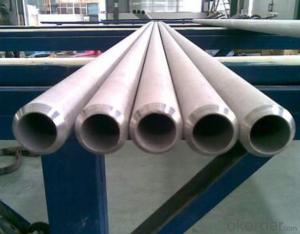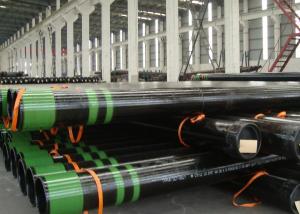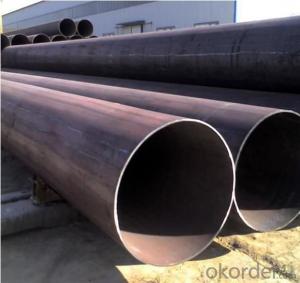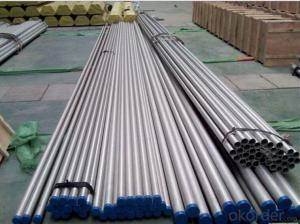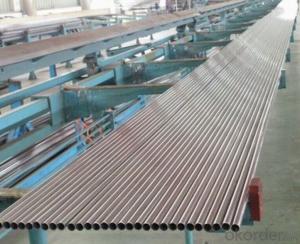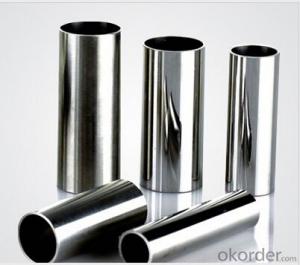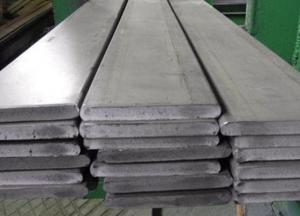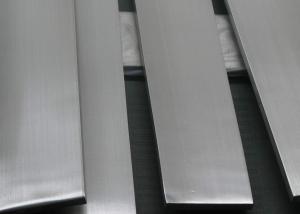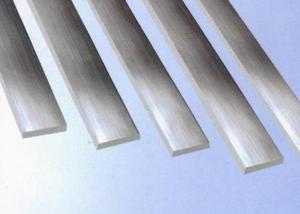STAINLESS STEEL LARGE DIAMETER PIPE
- Loading Port:
- China Main Port
- Payment Terms:
- TT OR LC
- Min Order Qty:
- -
- Supply Capability:
- -
OKorder Service Pledge
Quality Product, Order Online Tracking, Timely Delivery
OKorder Financial Service
Credit Rating, Credit Services, Credit Purchasing
You Might Also Like
Specifications
1. Guaranteed material from established steel factories2. Accordance with International standard
3. Attractive price
PRODUCT NAME: STAINLESS STEEL LARGE DIAMETER PIPE
| Name | STAINLESS STEEL LARGE DIAMETER PIPE |
| Standard | ASTM, GB, JIS, DIN, EN, AISI |
| Material Grade | TP304 TP304L TP316 TP316L TP347 TP347H TP321 TP321H TP310 TP310S |
| TP410 TP410S TP403 | |
| S31803/S32205 S32750 S32760 | |
| Outer Diameter | Welded Pipe: single slit(Φ8mm-Φ630mm); girth(Φ630mm-Φ3000mm), |
| Thickness | Welded Pipe: single slit(0.5mm-25mm); girth(3mm-30mm) |
| Length | Commonly 5.8 Meters or 6.0 Meters, or as customers' request |
| Tolerance | According to the Standard, +/-10% Commonly. |
| Surface | 180#, 320#, 400# Satin / Hairline, Bright Anneal, Pickle,400#, 500#, 600# or 800# Mirror finish |
| Application | Petrochemical industry, chemical fertilizer industry, oil refining industry, oil and gas industry, light industry and food industry, pulp and paper industry, energy and environmental industries. |
| Test | Flaring test, Flattening test, Bending Test, Hydraulic Test, Eddy Current test |
- Q: Can stainless steel pipes be used for food processing equipment?
- Yes, stainless steel pipes can be used for food processing equipment. Stainless steel is a preferred material for food processing due to its corrosion resistance, easy cleaning, and durability. It is also non-reactive, ensuring that it does not contaminate the food being processed.
- Q: How do you prevent pressure loss in stainless steel pipes?
- One way to prevent pressure loss in stainless steel pipes is to ensure proper installation and maintenance. This includes using high-quality fittings and connectors, following recommended guidelines for pipe sizing and support, and regularly inspecting and repairing any potential leaks or damages. Additionally, employing efficient flow control mechanisms such as valves and regulators can help minimize pressure loss in stainless steel pipes.
- Q: How do you calculate the flow rate of fluid through stainless steel pipes?
- To calculate the flow rate of fluid through stainless steel pipes, you can use the Bernoulli's equation or the Darcy-Weisbach equation. Both equations take into account various factors such as the diameter of the pipe, the length of the pipe, the viscosity of the fluid, and the pressure difference between the two ends of the pipe. 1. Bernoulli's equation: This equation is based on the principle of conservation of energy and relates the pressure, velocity, and elevation of a fluid along a streamline. The equation is as follows: P1 + 0.5 * ρ * V1^2 + ρ * g * h1 = P2 + 0.5 * ρ * V2^2 + ρ * g * h2 Where: - P1 and P2 are the pressures at the two ends of the pipe. - ρ is the density of the fluid. - V1 and V2 are the velocities of the fluid at the two ends of the pipe. - g is the acceleration due to gravity. - h1 and h2 are the elevations of the fluid at the two ends of the pipe. By rearranging the equation and solving for V1 or V2, you can calculate the velocity of the fluid. Multiplying the velocity by the cross-sectional area of the pipe will give you the flow rate. 2. Darcy-Weisbach equation: This equation is commonly used for calculating the pressure drop or head loss in a pipe due to the frictional resistance of the fluid flow. The equation is as follows: ΔP = f * (L / D) * (ρ * V^2 / 2) Where: - ΔP is the pressure drop between the two ends of the pipe. - f is the Darcy friction factor, which depends on the Reynolds number and the roughness of the pipe. - L is the length of the pipe. - D is the diameter of the pipe. - ρ is the density of the fluid. - V is the velocity of the fluid. By rearranging the equation and solving for V, you can calculate the velocity of the fluid. Multiplying the velocity by the cross-sectional area of the pipe will give you the flow rate. It is important to note that these equations provide theoretical calculations, and actual flow rates may vary due to other factors such as pipe roughness, fittings, and bends. Therefore, it is recommended to consider these factors and conduct experiments or consult industry standards for more accurate calculations.
- Q: The difference between stainless steel pipe and stainless steel composite pipe
- Stainless steel pipe is a kind of hollow long strip round steel, mainly used in petroleum, chemical, medical, food, light industry, machinery, instrument and other industrial pipeline and mechanical structure parts. In addition, the bending and torsional strength of the same weight is lighter, so it is also widely used in the manufacture of mechanical parts and engineering structures. It is also used to produce all kinds of conventional weapons, guns, shells and so on.
- Q: What is the difference between ERW and EFW stainless steel pipes?
- Stainless steel pipes can be manufactured using two different methods: ERW (Electric Resistance Welded) and EFW (Electric Fusion Welded). The primary distinction between these two methods is in the welding process employed. In the case of ERW stainless steel pipes, a flat sheet of steel is rolled into a cylindrical shape and then joined together at the edges using a high-frequency electrical current. This process yields a seamless and robust joint, ensuring the pipe's resistance to corrosion and a smooth interior surface. ERW pipes find extensive use in industries such as oil and gas, where durability and strength are crucial. In contrast, EFW stainless steel pipes are produced by melting the edges of two steel pieces together under the application of heat and pressure. This fusion welding process creates a continuous weld throughout the entire length of the pipe, eliminating the need for additional welding. EFW pipes are renowned for their exceptional corrosion resistance and are commonly utilized in environments characterized by high pressure and temperature, such as chemical plants and power generation facilities. To summarize, the primary distinction between ERW and EFW stainless steel pipes lies in the welding process. ERW pipes are formed by welding the edges of a flat sheet, whereas EFW pipes are created by fusing the edges of two steel pieces. Both methods offer distinct advantages and find application in different industries depending on the specific project requirements.
- Q: What is the difference between 304LN and 316LN stainless steel pipes?
- The main difference between 304LN and 316LN stainless steel pipes lies in their composition and the addition of certain elements. 304LN stainless steel is an austenitic stainless steel that contains low carbon content and nitrogen. It is designed to provide improved strength and corrosion resistance compared to standard 304 stainless steel. The addition of nitrogen promotes the formation of a stable austenite phase, which enhances the material's mechanical properties. On the other hand, 316LN stainless steel is also an austenitic stainless steel but contains molybdenum and a higher nickel content compared to 304LN. The addition of molybdenum increases the material's resistance to pitting corrosion caused by chlorides and other aggressive environments. The higher nickel content further enhances the corrosion resistance and makes it suitable for more demanding applications, such as marine environments or chemical processing. In summary, while both 304LN and 316LN stainless steel pipes are austenitic and offer good corrosion resistance, the addition of molybdenum and higher nickel content in 316LN makes it more suitable for applications where enhanced corrosion resistance is required, especially in aggressive environments.
- Q: Can stainless steel pipes be etched?
- Stainless steel pipes have the capability to undergo etching, a procedure which involves eliminating a thin layer of metal from the pipe's surface to achieve a desired design or pattern. This is typically accomplished by utilizing an acid or chemical solution that selectively dissolves the exposed metal. However, it is worth mentioning that not all grades of stainless steel are equally suitable for etching. Austenitic stainless steels, specifically 304 and 316, are frequently chosen for etching purposes due to their corrosion resistance and ease of etching. The etching process can also be influenced by various factors, including the composition and thickness of the stainless steel, as well as the chosen method and conditions for etching.
- Q: What are the common applications for stainless steel pipes?
- Stainless steel pipes have a wide range of applications due to their unique properties and versatility. Some of the common applications for stainless steel pipes include: 1. Plumbing and water supply systems: Stainless steel pipes are commonly used in plumbing and water supply systems due to their corrosion resistance and ability to withstand high pressure. They provide a reliable and long-lasting solution for transporting water and other fluids. 2. Oil and gas industry: Stainless steel pipes are extensively used in the oil and gas industry for transporting oil, gas, and other hydrocarbons. They can withstand high temperatures and pressures, making them suitable for exploration, production, and transportation of these resources. 3. Food and beverage industry: Stainless steel pipes are widely used in the food and beverage industry due to their hygienic properties and resistance to corrosion. They are commonly used for transporting liquids, such as milk, juices, and processed foods, ensuring the safety and quality of the products. 4. Chemical and pharmaceutical industry: Stainless steel pipes are highly resistant to corrosion, making them ideal for the chemical and pharmaceutical industry. They are used for transporting various chemicals, acids, and solvents, ensuring the integrity of the substances being transported. 5. Construction and architecture: Stainless steel pipes are used in construction and architectural applications due to their aesthetic appeal and structural strength. They are often used for handrails, balustrades, structural columns, and decorative applications, adding a modern and sleek look to buildings. 6. Automotive industry: Stainless steel pipes are utilized in the automotive industry for exhaust systems due to their heat resistance and durability. They can withstand high temperatures and corrosive gases, ensuring the efficient operation of the exhaust system. 7. Power generation: Stainless steel pipes are used in power plants for transporting steam, water, and other fluids. They are resistant to high temperatures and pressures, making them suitable for power generation applications. 8. Aerospace industry: Stainless steel pipes are utilized in the aerospace industry for various applications, including aircraft exhaust systems, hydraulic systems, and fuel lines. They offer high strength-to-weight ratio, corrosion resistance, and reliability, meeting the stringent requirements of the aerospace industry. In summary, stainless steel pipes find applications in various industries due to their corrosion resistance, durability, and versatility. They are used in plumbing, oil and gas, food and beverage, chemical and pharmaceutical, construction, automotive, power generation, and aerospace industries, among others.
- Q: Can stainless steel pipes be anodized?
- Stainless steel pipes cannot be subjected to anodization. Anodization is typically employed on aluminum to generate a safeguarding oxide layer on its surface. Conversely, stainless steel already possesses a spontaneous formation of a natural oxide layer, referred to as a passive layer, when it comes into contact with oxygen. This passive layer offers corrosion resistance to stainless steel pipes, eliminating the need for anodization. Consequently, anodization is neither essential nor possible for stainless steel pipes.
- Q: What is the difference between seamless and extruded stainless steel pipes?
- Seamless and extruded stainless steel pipes are both types of stainless steel pipes used in various industries and applications. However, there are certain differences between the two. 1. Manufacturing Process: The main difference between seamless and extruded stainless steel pipes lies in their manufacturing process. Seamless stainless steel pipes are produced through a method called hot rolling or hot extrusion, where a solid cylindrical billet is heated and pushed or pulled through a die to form a pipe without any seams. On the other hand, extruded stainless steel pipes are manufactured through a process called cold extrusion, where a solid stainless steel billet is forced through a die to obtain the desired shape and size. 2. Seamless Nature: As the name suggests, seamless stainless steel pipes do not have any seams or welds along their length. This makes them stronger and more reliable in terms of structural integrity. In contrast, extruded stainless steel pipes may have visible seams or welds, which can potentially weaken the overall structure. 3. Sizes and Dimensions: Seamless stainless steel pipes are available in a wider range of sizes and dimensions compared to extruded pipes. This is due to the hot rolling process, which allows for greater flexibility in shaping and forming the pipes. Extruded stainless steel pipes, on the other hand, are limited in terms of their size range and are generally used for smaller diameter applications. 4. Surface Finish: Seamless stainless steel pipes usually have a smooth and polished surface finish, which makes them suitable for applications where aesthetics are important, such as architectural structures or decorative elements. Extruded stainless steel pipes, on the other hand, may have a rougher surface finish due to the manufacturing process, making them more suitable for industrial or structural applications where appearance is less critical. 5. Cost: In general, seamless stainless steel pipes tend to be more expensive than extruded pipes due to the complexity of the manufacturing process. The hot rolling method requires specialized equipment and a higher level of expertise, which adds to the production cost. Extruded stainless steel pipes, being produced through a simpler cold extrusion process, are typically more cost-effective. In summary, the main differences between seamless and extruded stainless steel pipes lie in their manufacturing process, seamless nature, size range, surface finish, and cost. Depending on the specific requirements of a particular application, one may be preferred over the other.
Send your message to us
STAINLESS STEEL LARGE DIAMETER PIPE
- Loading Port:
- China Main Port
- Payment Terms:
- TT OR LC
- Min Order Qty:
- -
- Supply Capability:
- -
OKorder Service Pledge
Quality Product, Order Online Tracking, Timely Delivery
OKorder Financial Service
Credit Rating, Credit Services, Credit Purchasing
Similar products
Hot products
Hot Searches
Related keywords
